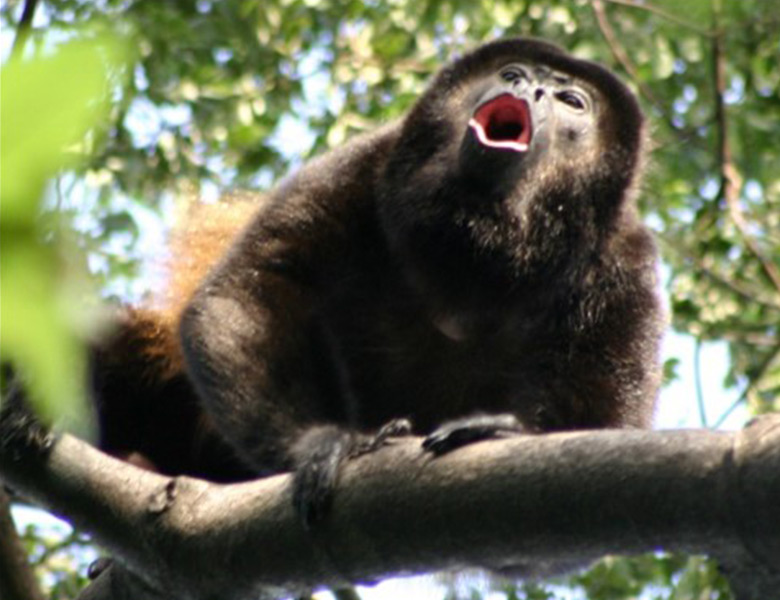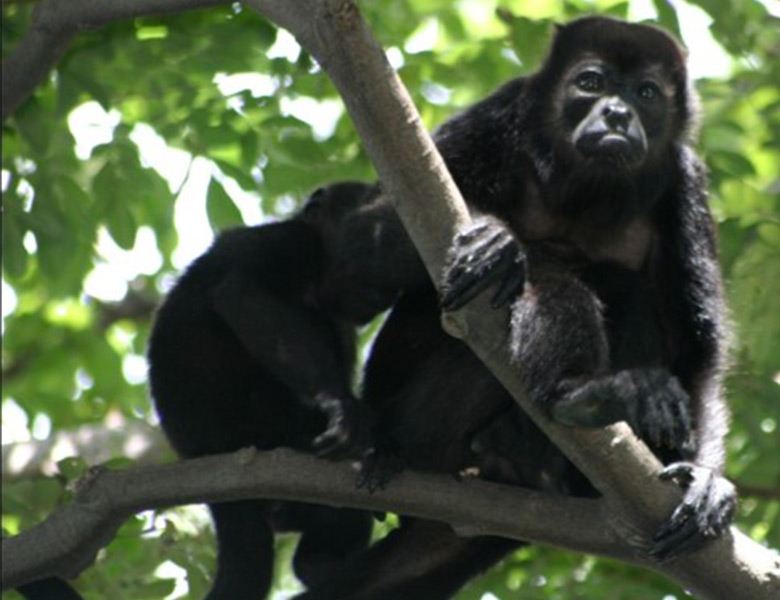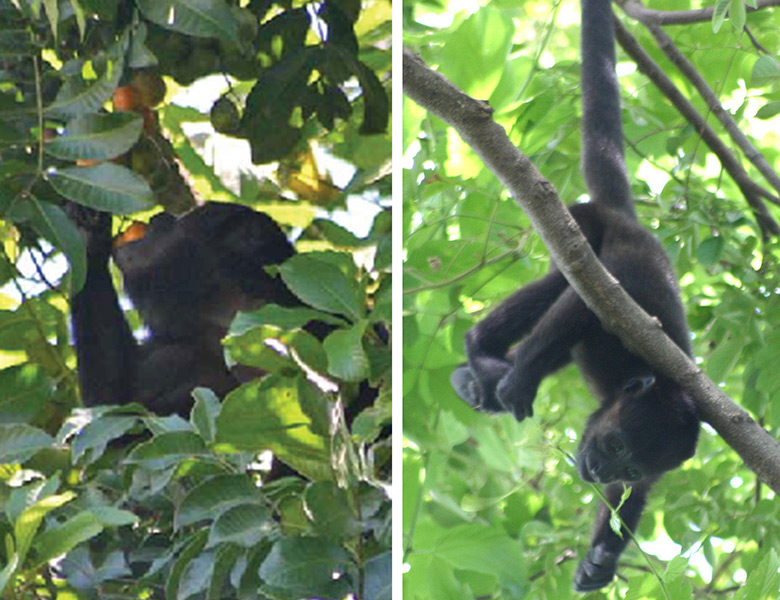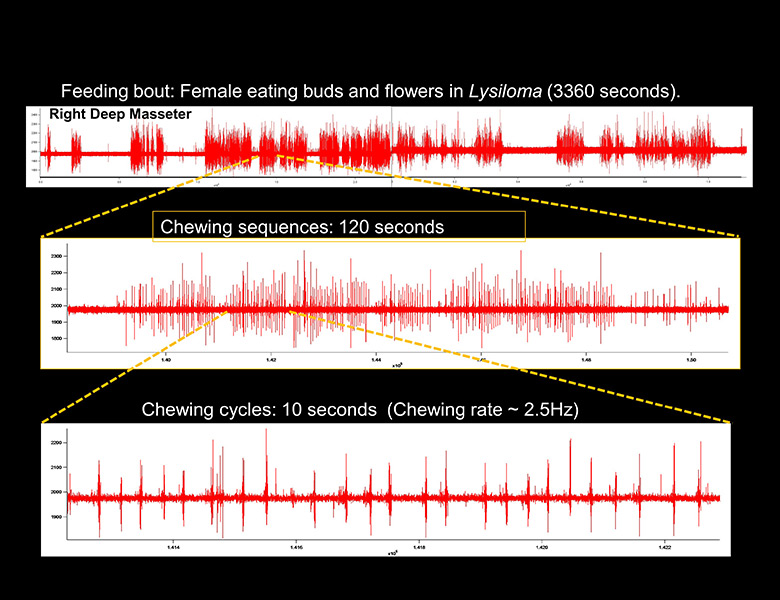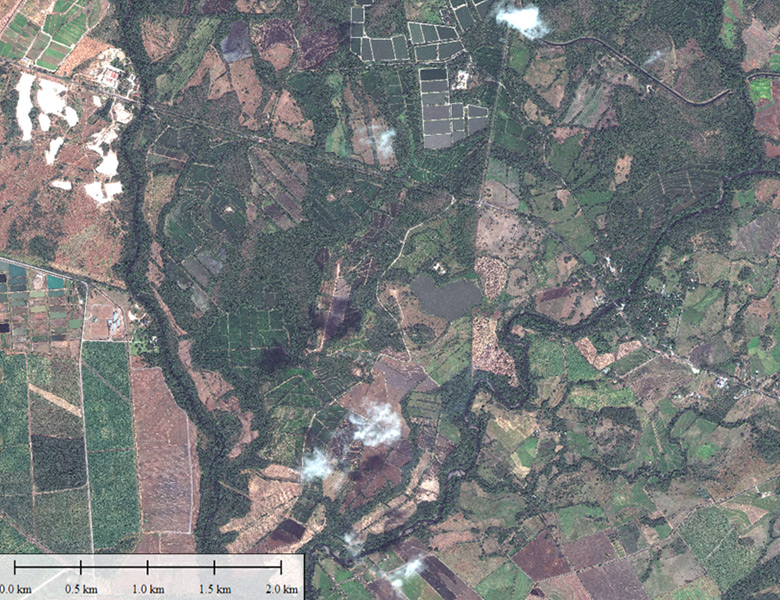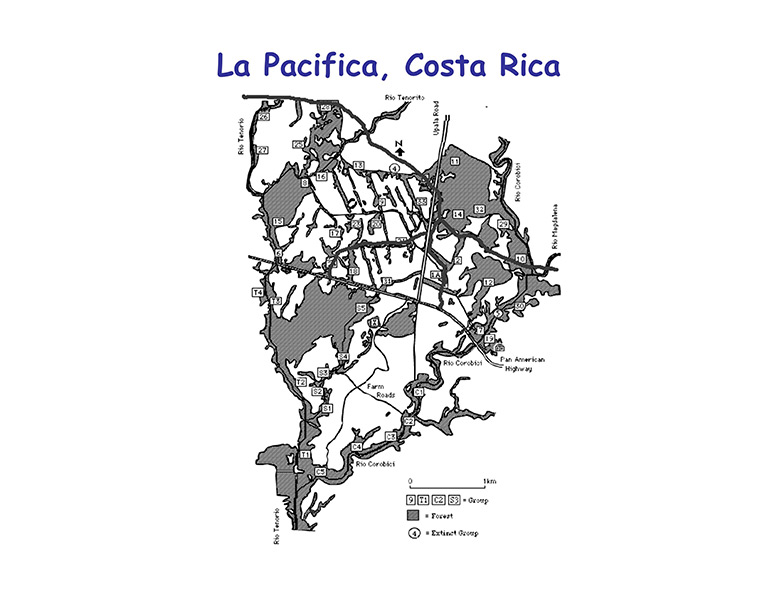Ecophysiology of Feeding and Thermoregulation in Primates
Ecophysiology of feeding in mantled howling monkeys
Biological anthropologists have a long-standing interest in the influence of diet and feeding on all aspects of primate biology, including primate evolution, behavior and morphology. Comparative studies of the structure of primate skulls and teeth, field studies on dietary selection and foraging behaviors, and laboratory studies on the dynamics of feeding in captive primates have all contributed significantly to this endeavor. However, these research programs have never been fully integrated, and assumptions inherent to each limit the strength of hypotheses linking diet and feeding to primate biology and adaptations. For example, an assumption of lab research is that feeding behaviors and jaw-muscle activity recorded in the lab accurately reflect those of wild primates feeding in their natural habitats. Likewise, when applying field work to questions about the evolution of primate feeding, it must be assumed that field observations are related to masticatory function as observed in the lab. The goal of this research is to integrate multiple lab and field methods into a study of foraging in free-ranging mantled howling monkeys at Hacienda La Pacifica, Costa Rica. We use a custom-designed telemetry system to record electromyographic data from the jaw muscles of free-ranging howlers while they feed in their natural habitat. We also quantify the mechanical properties of the foods consumed during the recording period. Finally, feeding and ranging behaviors of individuals are collected during the recording period. Data from this study is used to demonstrate how primates use their jaw-muscles during feeding on their natural foods and to generate ecologically relevant hypotheses relating jaw-muscle function to jaw structure.
This research was funded by National Science Foundation grants BCS-0720025, BCS-0720028, and BCS-0507074.
Thermoregulation in primates
Temperature is a key factor in the evolutionary pressures that primates face. Yet primatologists still lack a clear understanding of the relationships among temperature, behavior, physiology and ecology at the organismal level. Biochemical reactions can be explained by temperature on a microscopic scale, whole body responses to temperature fluctuations are well documented under controlled laboratory conditions and field studies have yielded behavioral data linked to environmental variation in temperatures, but these distinct research agendas remain largely independent. The goal of this project is to integrate these different research traditions to determine how temperature impacts the behavioral and physiological adaptations of primates living in their natural habitat. To this end, we have conducted field studies on wild mantled howling monkeys at Hacienda La Pacific in Costa Rica and Japanese macaques at Kyoto University’s Primate Research Institute in Japan. Like most primates, mantled howling monkeys live in warm tropical conditions and this has likely impacted their thermoregulatory evolution. In contrasts, Japanese macaques inhabit a cold, yet seasonal, environment with a high range of thermal variation. For this work we are documenting three-dimensional variation in temperature and other weather conditions throughout the forest canopy. In focal animals, we are collecting core body, subcutaneous and near-animal temperatures, recording feeding, postural and activity budgets related to behavioral thermoregulation, and assaying thyroid hormones to understand both daily and seasonal fluctuations. By jointly analyze these data, we can begin to clarify the functional and physiological basis of thermoregulation and energy budgets in these species.
This project is led by Dr. Cynthia Thompson at Grand Valley State University. Other collaborators include Dr. Chris Vinyard (NEOMED) and Dr. Ken Glander (Duke University).
Selected Publications & Presentations
Ecophysiology of feeding in mantled howling monkeys
- Vinyard, CJ, KE Glander, MF Teaford, CL Thompson, M Deffenbaugh, SH Williams. 2012. Methods for developing an ecological physiology of feeding in free-ranging howling monkeys (Alouatta palliata) at La Pacifica, Costa Rica. International Journal of Primatology 33: 611-631. https://doi.org/10.1007/s10764-012-9579-2
- Vinyard, CJ, AB Taylor, MF Teaford, KE Glander, MJ Ravosa, JB Rossie, TM Ryan, SH Williams. 2011. Are we looking for loads in all the right places? New research directions for studying the masticatory apparatus of New World monkeys. Anatomical Record 294: 2140-2157. https://doi.org/10.1002/ar.21512
- Williams SH, CJ Vinyard, K Glander, M Deffenbaugh, M Teaford and C Thompson. 2008. Telemetry system for assessing jaw-muscle function in free-ranging primates. International Journal of Primatology 29:1441-1453. https://doi.org/10.1007/s10764-008-9292-3
Thermoregulation in primates
- Thompson CL, B Powell, SH Williams, G Hanya, KE Glander, and CJ Vinyard. 2018. Thyroid hormone fluctuations indicate a thermoregulatory function in both a tropical (Alouatta palliata) and seasonally cold-habitat (Macaca fuscata) primate. American Journal of Primatology 79: http://doi.org/10.1002/ajp.22714
- Thompson CL, C Scheidel, KE Glander, SH Williams, and CJ Vinyard. 2017. An assessment of skin temperature gradients in a tropical primate using infrared thermography and subcutaneous implants. Journal of Thermal Biology. 63:49-57. https://doi.org/10.1016/j.jtherbio.2016.11.005
- Thompson CL, SH Williams, KE Glander and CJ Vinyard. 2016. Measuring microhabitat temperature in arboreal primates: A comparison of on-animal and stationery approaches. International Journal of Primatology. 37(4):495-517. https://doi.org/10.1007/s10764-016-9917-x
- Thompson CL, SH Williams, KE Glander, MF Teaford, CJ Vinyard. 2014. Body temperature and thermal environment in a generalized arboreal anthropoid, wild mantled howling monkeys (Alouatta palliata). American Journal of Physical Anthropology 154:1-10. https://doi.org/10.1002/ajpa.22505
